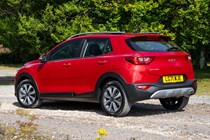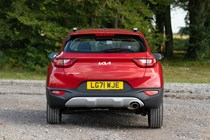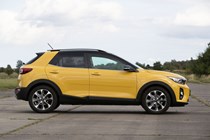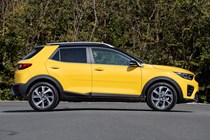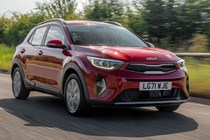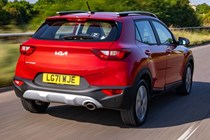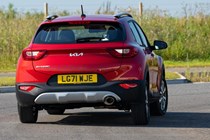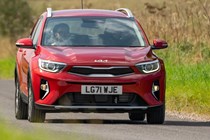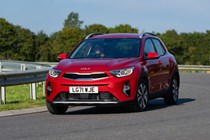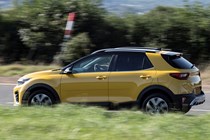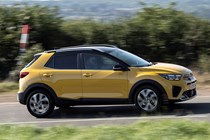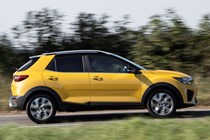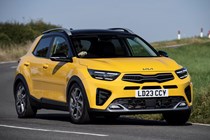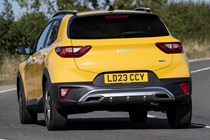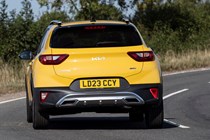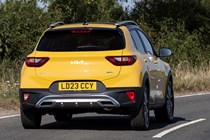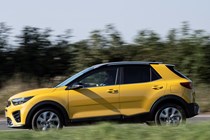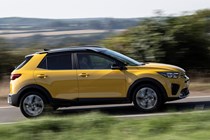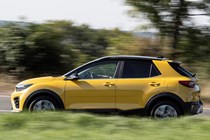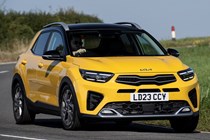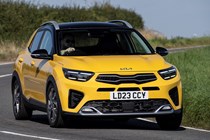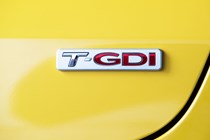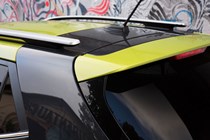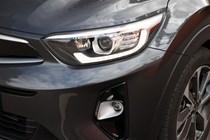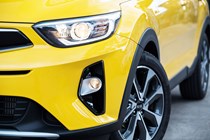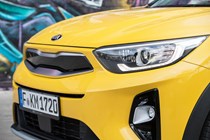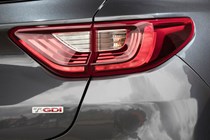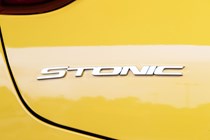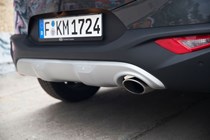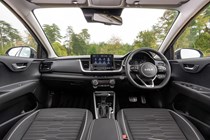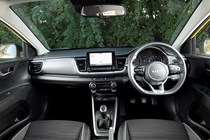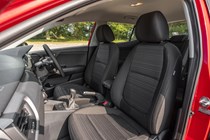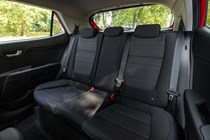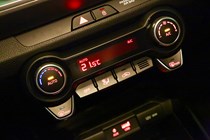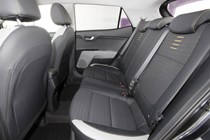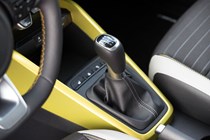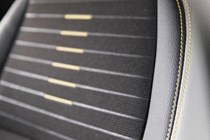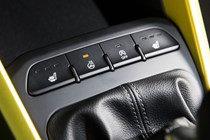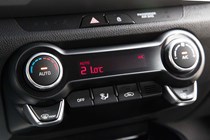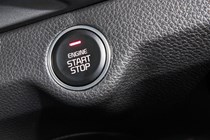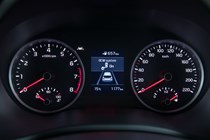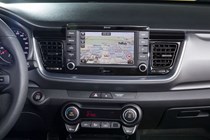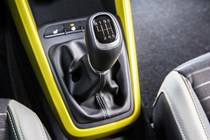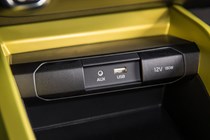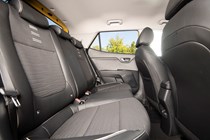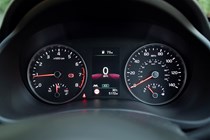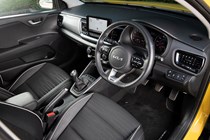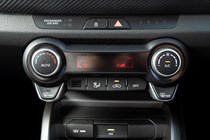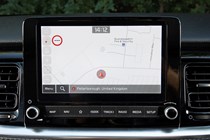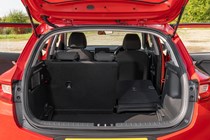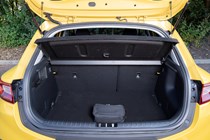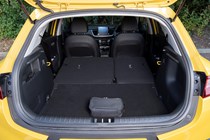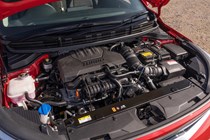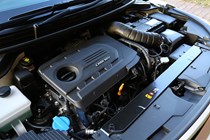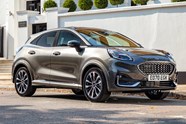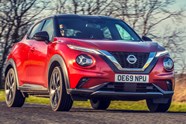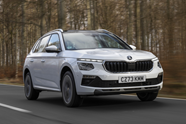Kia Stonic review
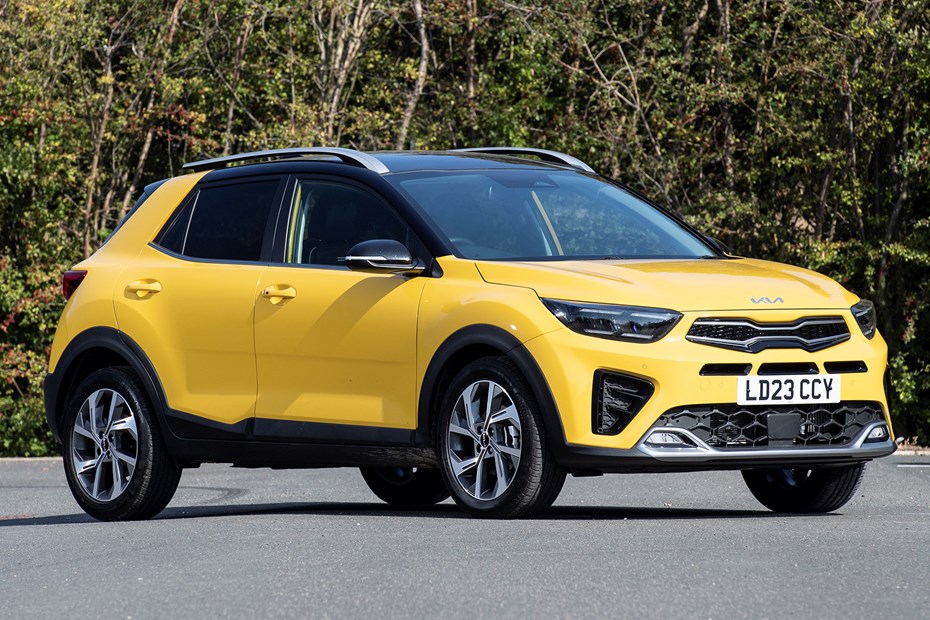
At a glance
| Price new | £20,540 - £25,600 |
|---|---|
| Used prices | £6,786 - £23,243 |
| Road tax cost | £190 |
| Insurance group | 8 - 14 |
Get an insurance quote with

|
|
| Fuel economy | 44.8 - 56.5 mpg |
| Range | 539 - 770 miles |
| Miles per pound | 6.6 - 8.1 |
| View full specs for a specific version | |
Available fuel types
Petrol
Diesel
Pros & cons
- Good looks
- Practical boot
- High level of standard equipment
- Feels quite cheap inside
- Noisy engines
- Firm ride
Kia Stonic SUV rivals
Overview
The Stonic – meant to be Kia’s portmanteau of ‘speedy’ and ‘tonic’ – was Kia’s first attempt at a compact SUV to go up against a whole raft of small crossovers that are replacing more traditonal family hatchbacks in the minds of car buyers. Launched in 2017, it received a minor facelift in 2020 and is due to be replaced in 2024.
It really does have a lot of rivals. With everybody from Audi to Volkswagen building compact SUVs, these days the Stonic has a really tough job on its hands to stand out. But that’s not to say that Kia’s not in a good position to earn your monthly payments with it – the Stonic is economical, practical and is available with a peppy mild hybrid engine and manual or automatic transmissions.
It also comes with a low starting price and generous standard equipment, and that means you don’t need to spend too much in order to get a perfectly serviceable Stonic, while Kia’s standard seven-year warranty gives some real peace of mind. No wonder it has earned itself a reputation for reliability that cannot be said for some of its rivals.
There’s a choice of four trim levels, two engines and two transmission. The range rather confusingly kicks off with ‘2’ trim, moving through GT-Line, Connect and GT-Line S. The two GT-Line cars come with a bespoke bodykit, signature LED daytime running lights and sportier-looking alloy wheels, while ‘2’ and Connect trims look rather plainer with old-fashioned halogen projector headlights.
You’ll need Connect or GT-Line S trim to benefit from a contrasting roof colour, a feature which does make the Stonic look a lot sharper and up there with its most desirable rivals.
As for engines, they’re both 1.0-litre turbocharged petrols. All but the entry-level cars come with 48V mild hybrid assistance, though – aimed at reducing CO2 emissions and improving engine response and fuel economy. You can choose either a six-speed manual or a seven-speed dual-clutch automatic transmission.



